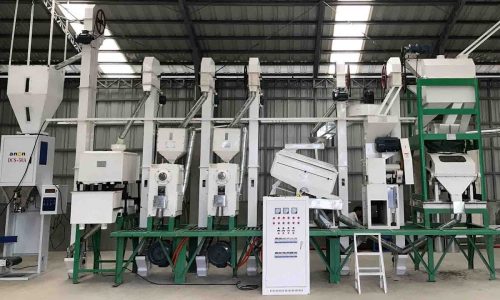Project Report For Mini Rice Mill
Introduction
Project Report For Mini Rice Mill is as follows.
A micro rice mill is a scaled-down version of a regular rice mill used to convert paddy rice into edible rice. It is usually appropriate for small-scale farmers, businesspeople, or individuals who want to process rice on a modest scale. Mini rice mills are small and inexpensive, and they simplify rice milling.
A paddy separator, dehusker, whitener, and polisher are the most common components of a micro rice mill. These devices are designed to execute the core duties of rice processing, although at a lesser capacity than bigger mills. The paddy separator aids in the separation of contaminants such as stones and debris from paddy rice. It enables effective cleaning and guarantees that only clean paddy rice reaches the mill.
The dehusker is in charge of removing the outer husk from paddy rice. It separates the husk from the rice grain via friction or abrasion, resulting in brown rice or rough rice. Whitener is used to remove the bran layers from brown rice, yielding polished white rice. It achieves the required amount of brightness and texture by friction or abrasion. Some tiny rice mills may incorporate a polisher to improve the look and quality of the rice. The polisher eliminates any leftover bran particles, leaving the rice looking bright and polished.
Mini rice mills are frequently portable, allowing them to be quickly carried and set up in tiny locations. They are usually powered by electricity or tiny diesel engines, making them ideal for places with limited access to power. Although micro rice mills have a lower processing capacity than bigger mills, they nonetheless have some advantages.
They give small-scale farmers the option to process their own rice and enhance their revenue by selling value-added goods. Mini rice mills also help to reduce post-harvest losses by allowing on-site rice processing, which eliminates the need for paddy to be transported to bigger mills. Furthermore, micro rice mills provide output capacity flexibility and may be modified to match local market demands.

Benefits Of Mini Rice Mill
Increased Profitability: Mini rice mills allow small-scale farmers to prepare their own rice rather than selling raw paddy. Farmers may command better prices for processed rice by adding value to their produce, increasing their profitability and revenue.
Reduced Post-Harvest Losses: With tiny rice mills, farmers may process harvested paddy immediately, decreasing the possibility of post-harvest losses due to spoiling or damage during transit to bigger mills. This helps to retain rice quality and quantity, maximising production and profitability for farmers.
Quality Control: Mini rice mills provide farmers more control over the quality of their rice. They may guarantee that rice is cleaned, dehusked, and polished properly, resulting in high-quality rice that satisfies market requirements. This contributes to the development of a quality reputation and might lead to increased market prospects.
Cost and Time Savings: Mini rice mills save farmers time, labour and transportation expenses by removing the need to carry paddy to distant mills. The ease of on-site rice processing enables for more effective resource utilisation and lowers reliance on external processing facilities.
Market Potential Of Mini Rice Mill
The mini Rice Mill Market is predicted to be worth USD 0.23 billion in 2023 and USD 0.28 billion by 2028, increasing at a CAGR of 4% during the forecast period (2023-2028).
The need for certified rice milling mills is propelling the rice milling machinery industry forward. This is due to the fact that approved technology provides high-quality rice processing, which is required to fulfil the rising demand for rice. Rice is a staple meal in many nations, therefore demand is projected to stay strong in the near future.
As a result, demand for rice milling machinery will continue to rise. The major staple for more than half of the world’s population is produced globally, with over 90% growing in Asia. China is Asia’s top rice producer. While the four basic types of rice are Indica, Aromatic (Jasmine and Basmati), Japonica, and Glutinous, many more speciality kinds of rice are developed internationally.
Project Report Sample On Mini Rice Mill
Need Help?
Create 100% Bankable Project Report
